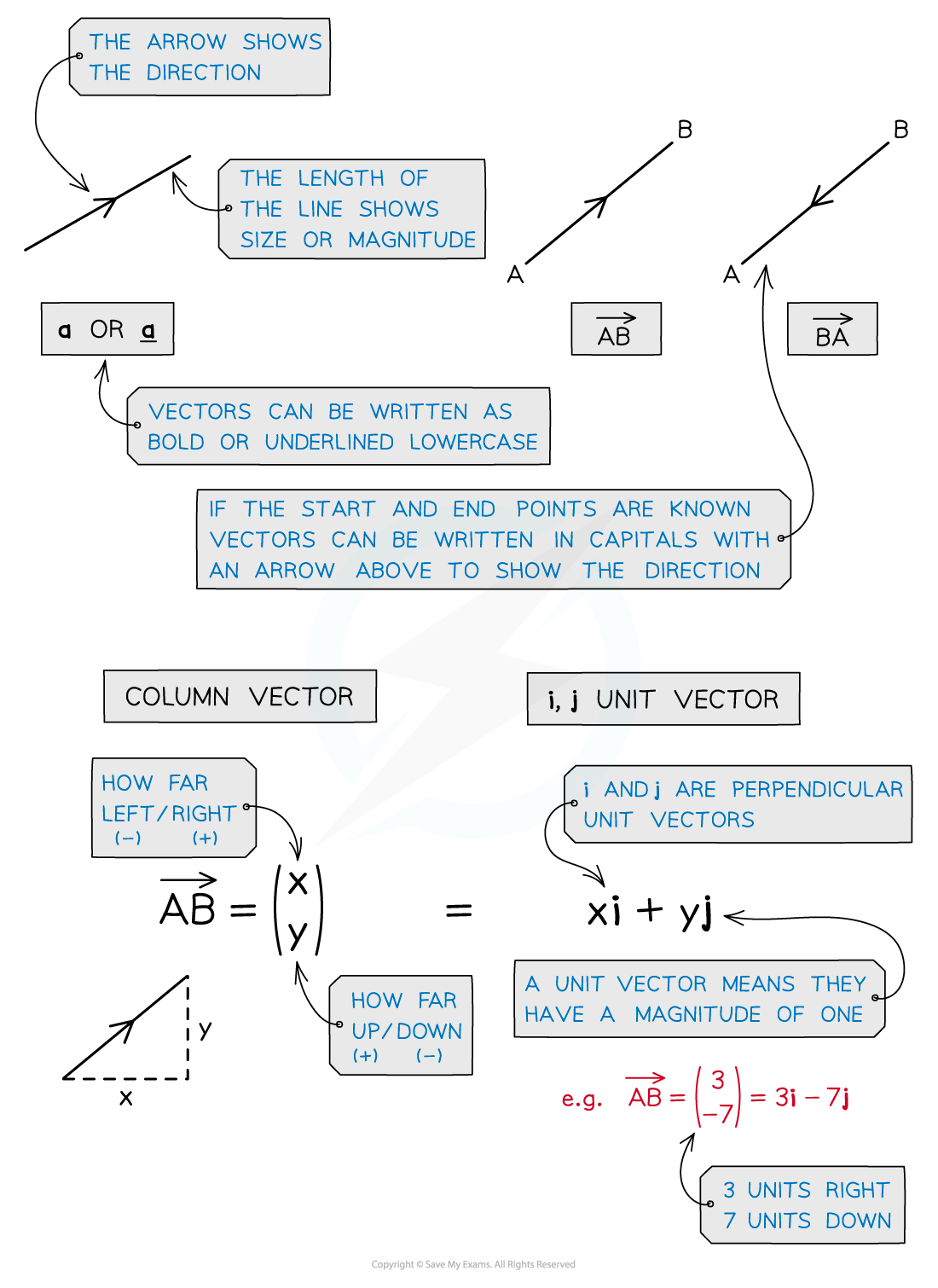Vector Basics (Edexcel IGCSE Further Pure Maths): Revision Note
Exam code: 4PM1
Vector Notation
What is a vector?
Vectors represent a movement of a certain distance (magnitude) in a given direction
In one dimension, the sign of a number represents its direction
For example, two objects with velocities 7 m/s and ‑7 m/s are travelling:
at the same speed (magnitude)
but in opposite directions
In two dimensions, vectors consist of x- and y-components
This shows movement parallel to the x and y-axes
Components can be positive or negative
What is a scalar?
A scalar is an ordinary number that does not represent movement
A scalar is not a vector
Scalars can still be negative
For example
temperature is a scalar (it's -2°C today)
but change in temperature is a vector (it's +3°C from yesterday)
How do I write vectors?
If you know the two components of a vector, you can write it as
either a column vector
is 3 right and 2 up
or in i and j notation
If you do not know the components, use a lower-case letter to represent the entire vector
Exams use bold letters
a, b, ...
You should write underlined letters
a, b, ...
If points (A , B , ...) are given,
means the vector from A to B
The order matters

Examiner Tips and Tricks
Diagrams can help. If there isn’t one, try sketching one!
Adding & Subtracting Vectors
How do I add vectors?
To add vectors you add their components
For column vectors, add the tops together and bottoms together
In i and j notation, add i and j parts separately
(2i + j) + (i + 4j) = (3i + 5j)
Visually, the vector a + b is the shortest route
from the start of a
to the end of b

How do I subtract vectors?
To subtract vectors you subtract their components
In i and j notation, subtract i and j parts separately
Be careful with brackets and negatives
(2i + j) - (i + 4j) = (i - 3j)
Visually, the vector a - b is the shortest route
from the start of a
to the end of -b

How do I add and subtract vectors on diagrams?
Think of travelling along vectors as a journey
a + b means follow a, then follow b
This is the same as b + a
They both end up at the same place
The diagram below shows vectors s, t and u
To get from A to C do s then t
s + t
If you have to travel the wrong direction along a vector, add the negative of that vector
To get from B to D do t then the reverse of u
t + (-u)
This simplifies to t - u
A vector plus its negative gives the zero vector, 0
a + (-a) = 0
The zero is bold (or underlined)

How do I multiply a vector by a scalar?
The vector a multiplied by a scalar (constant number) k is ka
ka is parallel to a
k is the scale factor of enlargement
A negative k reverses the direction
Multiply all components by the scalar constant
For example
2(4i + 5j) = 8i + 10j


Examiner Tips and Tricks
In the exam, questions with lots of parts usually build on each other.
Check if any previous results give shortcuts!
Worked Example
Two vectors are given by a = 4i + 2j and b = pi – j where p is an unknown constant.
If a + 2b = –6i, find the value of p.
Substitute the vectors into the left-hand side
(4i + 2j) + 2(pi – j)
Expand the brackets
4i + 2j + 2pi – 2j
Add the vectors by adding the components
The 2j and -2j cancel
(4 + 2p)i
This must equal the right-hand side of –6i
Write down an equation in p to balance both sides
4 + 2p = –6
Solve it to find p
2p = –10
p = –5

You've read 0 of your 5 free revision notes this week
Unlock more, it's free!
Did this page help you?